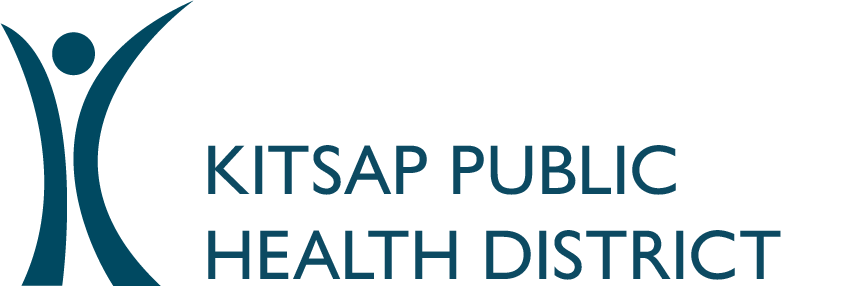Important health reminders during flooding and storms
- tadsooter
- Jan 31
- 4 min read
Floodwater can spread germs, pollute wells, and cause problems for septic systems.
KITSAP COUNTY, WA — With high tides and wet and snowy weather expected over the next few days, be aware of health hazards related to floodwater and storms.
Here are tips to keep you and your family safe and healthy.
Don't let floodwater make you sick
Floodwater can carry germs and other types of pollution. We recommend that you:
Avoid direct contact with floodwater and wear protective equipment when working around floodwater.
Wash skin thoroughly with soap and clean water if you have contact with floodwater or handle contaminated items.
Throw away all food that has come in contact with floodwater. Canned food is safe to use but be sure to disinfect cans by wiping them with bleach water before use.
Take care of your septic system
Septic systems may not work properly if soil in the drainfield area becomes too wet.
If your drainfield is very wet or under water, cut back on the amount of water you use in your home to prevent the system from failing. Overusing a septic system while the drainfield is flooded can cause sewage to back up into the house or rise to the surface in your drainfield area.
During extreme wet weather, follow simple steps to protect your septic system:
Spread out water use during the day and week to even out water flow to the drainfield.
Avoid using the washing machine, cut back on toilet flushes, and reduce bathing.
Identify and repair all leaky plumbing fixtures. A running toilet or a leaky faucet can discharge many gallons of extra water each day to the drainfield.
Identify and repair all leaky septic tanks, risers, and other equipment.
Make sure stormwater and water from downspouts flows away from the septic system.
Make sure your drinking water is safe
Stormwater can pollute drinking water from wells. Store one gallon of water per person, per day to be prepared for storms and emergencies.
Public water systems: If there is flooding, local authorities or water system operators may recommend using only bottled, boiled, or disinfected water until regular water service is restored.
Private wells/small water systems: If your drinking water well is flooded, assume the water in your home is polluted and unsafe to drink. Wells may require disinfection if flooded.
We recommend drinking bottled water that has been stored less than six months in tightly sealed containers. You can also take steps to disinfect (purify) well water:
Purifying by boiling
If your tap water is unsafe, boiling is the best method to kill germs.
Cloudy water should be filtered before boiling. Use coffee filters, paper towels, cheesecloth or a cotton plug in a funnel.
Bring the water to a rolling boil for at least 1 minute.
Let the water cool before drinking.
Add two drops of household bleach per gallon to maintain water quality while in storage.
Purifying with bleach
Treat water by adding liquid household bleach.
Household bleach is typically between 5.25% and 8.25% chlorine. Read the label.
Avoid using bleaches that contain perfumes, dyes and other additives. Be sure to read the label.
Cloudy water should be filtered before adding bleach.
Place the water in a clean container. Add 1/4 teaspoon of bleach to 1 gallon of water, or 1 teaspoon of bleach to 5 gallons of water. (See this page for additional guidance.)
Mix thoroughly and let stand for at least 1 hour before drinking.
Never use generators indoors
Incorrect generator use can lead to carbon monoxide poisoning, electric shock, or fire.
Follow directions supplied with the generator.
Don’t overload your generator.
Only use portable generators and barbecues outdoors. Using these appliances inside can cause carbon monoxide poisoning and death.
Keep food safe during a power outage
If the power has gone out:
Use a thermometer to check the temperature of foods in your refrigerator and freezer. Refrigerated foods should be 41°F or colder and frozen foods should be 0°F or colder.
Keep refrigerator and freezer doors closed to conserve cold air or keep food cold with ice or dry ice. During a power outage, a full freezer will hold its temperature for about 48 hours or about 24 hours if it is half-full. A refrigerator will keep food safe for about 4 hours.
If you plan to eat refrigerated or frozen meat, poultry, fish, or eggs while they are still at safe temperatures, cook them thoroughly to ensure any harmful bacteria are destroyed.
When in doubt, throw it out! Never taste food to determine its safety. The following foods should be discarded if you decide to throw food away:
Meat, poultry, or seafood products
Soft cheeses and shredded cheeses
Milk, cream, yogurt, and other dairy products
Opened baby formula
Eggs and egg products
Dough and cooked pasta
Cooked or cut produce
Do not harvest shellfish after a storm
Stormwater can pollute shellfish beds. Do not harvest shellfish from shorelines near populated areas during — and for at least five days after — heavy rain.


.png)
